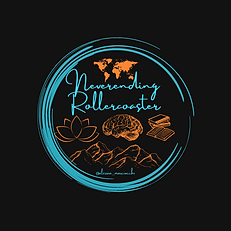The Ancient Art of Yoga Teaching: Are You a Beginner, Intermediate, or Advanced Student?
- Alessia Masciocchi
- Feb 6
- 3 min read
HHi beauties,
Have you ever wondered where you might fit in the traditional yoga journey? The ancient text Śiva Saṃhitā (शिव संहिता, /ʃɪvə səmhɪtɑː/) offers a fascinating perspective on this, breaking down students into different types - and trust me, it's not just about how well you can do a headstand!
Let's dive into this ancient wisdom and see where you might find yourself.

The Four Types of Yoga Students: Where Do You Fit?
The ancient yogis (yogin, योगिन् /joːgɪn/) were incredibly practical. They understood that not everyone comes to yoga with the same capabilities or mindset. The Śiva Saṃhitā describes four types of students, or sādhakas (साधक /sɑːdhəkə/):
The Gentle Beginner (Mṛdu, मृदु /mɹ̩du/)
These are beginners; let's be honest - we've all been there! The text describes mṛdu students as those who might:
Still be finding their footing in practice
Sometimes, they question their teacher's methods
Struggle with consistency (abhyāsa, अभ्यास /əbʱjɑːsə/)
Find it challenging to maintain focus (dhāraṇā, धारणा /dʱɑːrəɳɑː/)
Don't worry if this sounds like you - the ancient yogis had a plan! For these students, they recommended Mantra Yoga (मन्त्र योग /məntrə joːgə/), working with sacred sounds and vibrations. Think of it as starting with the basics - just like learning to walk before you run.
The Steady Intermediate (Madhyama, मध्यम /mədʱjəmə/)
These practitioners have found their groove. They're:
Even-tempered and balanced (sama, सम /səmə/)
Ready to face challenges
Patient with their progress
Gentle in their approach
For these dedicated souls, the traditional path prescribes Laya Yoga (लय योग /ləjə joːgə/) - the yoga of deep meditation and absorption. It's like levelling up in your spiritual practice!
The Devoted Practitioner (Adhimātra, अधिमात्र /ədʱɪmɑːtrə/)
Now we're talking about those students who:
Show unwavering dedication (śraddhā, श्रद्धा /ʃrəddʱɑː/)
Maintain a stable practice
Act with compassion (karuṇā, करुणा /kəruɳɑː/) and truth (satya, सत्य /sətjə/)
Deeply respect their teachers
These practitioners are ready for the physical and energetic practices of Haṭha Yoga (हठ योग /həʈʰə joːgə/). Their commitment can lead to significant transformations within six years.
The Exceptional Student (Adhimātrama, अधिमात्रम /ədʱɪmɑːtrəmə/)
These rare practitioners are:
Highly disciplined (tapas, तपस् /təpəs/)
Deeply knowledgeable (jñāna, ज्ञान /dʒɲɑːnə/)
Mentally strong (dhṛti, धृति /dʱɹ̩tɪ/)
Balanced in all aspects of life
The Magic of the Teacher-Student Relationship
Here's where it gets really interesting.
In Sanskrit, a teacher is called a Guru (गुरु /guru/), literally meaning "dispeller of darkness." Pretty powerful, right? But this isn't just about someone showing you how to do poses correctly.
The relationship between teacher (Guru) and student (Śiṣya, शिष्य /ʃɪʂjə/) is considered sacred in yoga tradition. Think of it as more than just a fitness instructor-client relationship - it's more like having a mentor who's invested in your complete transformation.
A Tale of Two Students
There's this amazing ancient story about two students - Indra (इन्द्र /ɪndrə/) and Virochana (विरोचन /vɪroːtʃənə/). Both learned from the same teacher, but only Indra achieved enlightenment (mokṣa, मोक्ष /moːkʂə/).
Why?
Because he brought three essential qualities to his learning:
Devotion to the practice (bhakti, भक्ति /bʱəktɪ/)
Trust in his teacher (śraddhā)
Genuine desire to learn (jijñāsā, जिज्ञासा /dʒɪdʒɲɑːsɑː/)
What This Means for Modern Yoga Students
You might be thinking, "This is all very ancient and philosophical, but what does it mean for my practice today?"
Here's the beautiful part - these teachings are still incredibly relevant:
Know Your Level:
Understanding where you are helps you choose the right practice and set realistic expectations.
Trust the Process:
Progress in yoga isn't just about physical achievements - it's about overall transformation.
Value the Relationship:
A good teacher-student connection can transform your practice.
Whether you're just starting out or you've been practising for years, the ancient yogis left us a roadmap for growth.
They understood that everyone's journey is different, and that's perfectly okay! The key is to practice with dedication, patience, and openness to learning.
Remember what the texts say about the three powers:
Love brings courage
Moderation creates abundance
Humility generates true power
So, where do you see yourself in this ancient wisdom?
Are you a mridu student, just beginning your journey, or perhaps a madhyama practitioner, ready to deepen your practice?
Wherever you are, know that you're exactly where you need to be on your yoga journey.
Want to learn more about these ancient yoga texts?
Check out the Śiva Saṃhitā, Haṭha Yoga Pradīpikā (हठ योग प्रदीपिका /həʈʰə joːgə prədiːpɪkɑː/), and the Bhagavad Gītā (भगवद्गीता /bʱəgəvəd giːtɑː/) - they're treasure troves of yogic wisdom!

Comments